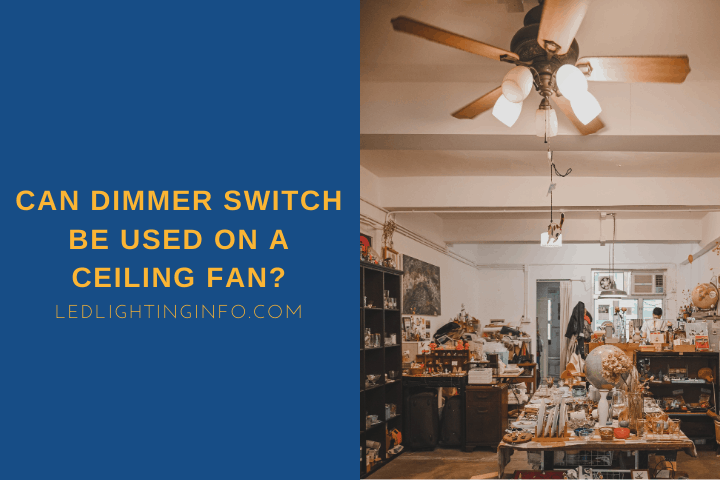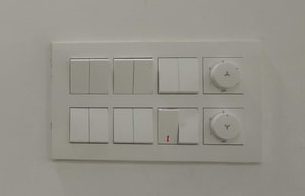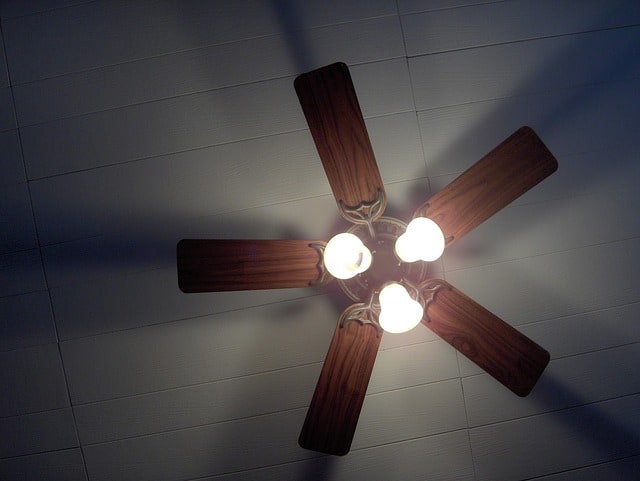There’s nothing more relaxing than a breezy fan cooling you off on a hot summer afternoon. But it doesn’t take much to take away the calm.
Something as little as a buzzing or a slowing speed can bother your otherwise peaceful moment. A dimmer switch can be the culprit.
The dimmer switch regulates the voltage in the circuit while a purpose-built fan controller regulates the amperage in the circuit. Because of this, dimmer switches cannot be used on the ceiling fan without running into a host of problems.
Dimmer Switch Vs Fan Speed Control
Talking about the differences between a dimmer switch and a fan speed regulator, the basic one is that the dimmer reduces the voltage. In contrast, the fan control reduces the amperage.
The fan speed controller regulates the rotor’s speed by increasing or decreasing the current, or amperage, available to the rotor.
A component called the regulator first regulates the voltage, which in turn adjusts the current.
Current is the volume of electrons passing through the conductor to overcome a voltage difference.
The current flow is high when the voltage difference (potential) is high. The current reduces as the voltage difference reduces.
Additionally, a fan’s rotor requires a high influx of current to start it when you turn on a fan. Then it can regulate the speed depending on whether you turned it to high, medium, or low.
On the flip side lies the dimmer switch, which controls voltage in a circuit. As the voltage reduces, the light produces less power. As the voltage increases by raising the dimmer, the light becomes brighter.
This does not work with a ceiling fan.
Here, voltage is simply the difference in the electrical potential between the wire and the light. The larger the difference in electrical charge between these two, the higher the voltage will be.
What Happens When You Use a Dimmer Switch With a Ceiling Fan?
Dimmer switches in the stores are nowadays marked clearly where they can be used and compatible with.
One wonders what made such a distinction necessary to be put on the switch package and the spec sheet and printed onto the dimmer switch right under the cover.
The warning would say ‘for incandescent lights only’ on dimmer switches.
Clearly, there were mistakes made by DIY home enthusiasts taking electrical work into their hands. And those mistakes have been costly and dangerous.
So what is causing the trouble in using dimmers to control fan speed?
The key point lies in the difference in the working of a dimmer switch and an actual purpose-built fan speed controller.
As explained, a fan speed controller controls the amount of current, or amperage is provided to the fan’s motor to increase or decrease the speed.
Let’s look at a scenario in which the fan speed controller usually works.
Using a fan speed controller when you first turn on a fan on ‘LOW,’ there is a high current provided to start the fan’s rotor. Then it quickly falls to low amperage as the fan picks up speed.
So fans will start at high speed, and then quickly decrease to the required low speed.
On the other hand, a dimmer switch is designed to control voltage. And since it is meant to control the brightness of a light, it works as it should with a light.
However, a filled-diaper hits the fan when you connect a dimmer to the fan motor!
The fan motor will burn out as it cannot take the excessive voltage that flows through the dimmer if you set the dimmer to a high setting.
The voltage will be high as the rotor tries to start itself and allow high current to pass. This high voltage melts contacts in the fan.
Using the same example of starting the fan on low using a dimmer, an additional problem is that the associated low current will not be enough to trigger the fan to start on low.
That is why it is vital to change the rotor’s amperage instead of adjusting the voltage. This functionality is not available in a regular dimmer switch meant to dim lights.
Bear in mind that a ceiling fan directly connected to a dimmer switch could mean trouble as a fan’s motor will easily get damaged due to overheating.
Related: How Far Should The Light Switch Be From The Door?
And as we all know, overheating and electrical appliances do not go well together. In worst-case scenarios, prolonged and unsupervised dimmer control can cause enough heat to start a fire.
To safeguard from these, fan speed controllers have extra hardware such as rugged triacs and additional snubber circuits to survive load fluctuations.
Common Problems With Dimmer Switch On The Ceiling Fans
Now you know what would happen when the dimmer can supply excess voltage to the fan system.
On the other hand, providing low voltage will most likely not damage the rotor right off the bat. Still, many other issues will present themselves even if the dimmer will work technically, and your fan will rotate.
One of the more common problems is that the fan makes a groaning noise at low speeds. Some people report it as a buzzing or humming noise.
None of these are noises you want on your quiet afternoon under a breezy fan.
Another very annoying problem is that the fan will not be fast at all. Using the same fan in a non-dimmer setup will see that the fan speeds up and reaches the stated maximum speed.
But when installed with a dimmer switch, the maximum speed is far off.
What’s interesting is that the slowing down of the fan speed could also occur over a longer time frame, like a year.
Electricians have responded to homeowners’ complaints of a slowing fan only to find a dimmer switch.
Explore more: Is It Normal For Dimmer Switch To Get Hot?
What Type Of The Switch Should Be Used With Ceiling Fans?
Now that you know what doesn’t work with ceiling fans, let’s talk about types of switches that can work well with ceiling fans and lights.
You can purchase specialized purpose-built dimmer switches (Amazon) that separately control the speed of the fan, and the brightness of the bulb in one console.
This type requires that your wall wiring has three wires coming out, meaning a separate one for fan and light.
Then there are simple fan control switches (Amazon) that control the current as I mentioned, and only require the fan wire.
These options can easily replace two separate switches for the fan and the light, or the pull string that goes on the fan itself.
Finally, the coolest version is a 2-in-1 smart switch (Amazon) that not only controls the fan and light in one, but is a smart gadget.
That means that it takes inputs from your phone app or home assistants like Google or Alexa to automatically control and pre-program your fan and light fixture over your home WiFi network.
Final Words
Always consult manufacturer advice and guides like this before going ahead with any DIY work that is related to electricity, even if you consider yourself fairly expert. You never know what issues you might come across.
So keep regular light dimmers and ceiling fans separate, as the working behind them is unsuspectingly different.
Have you observed your ceiling fan making any unwanted noises or slowing down?
What kind of wiring is currently set up with your ceiling fan and light, and what kind of a switch do you plan on utilizing with them?
Share your ideas with me in the comments below.





Comments are closed.